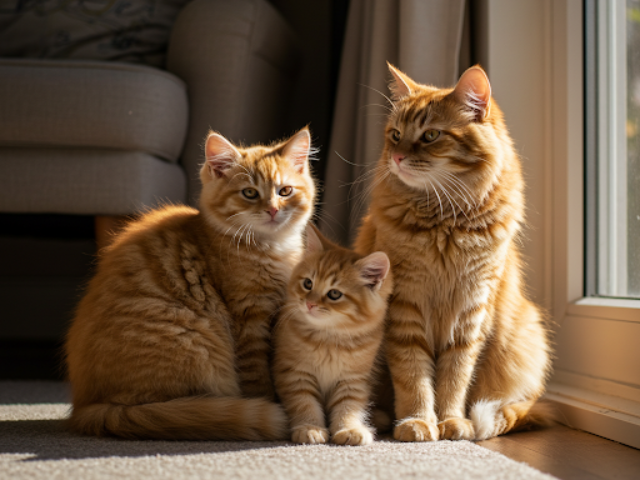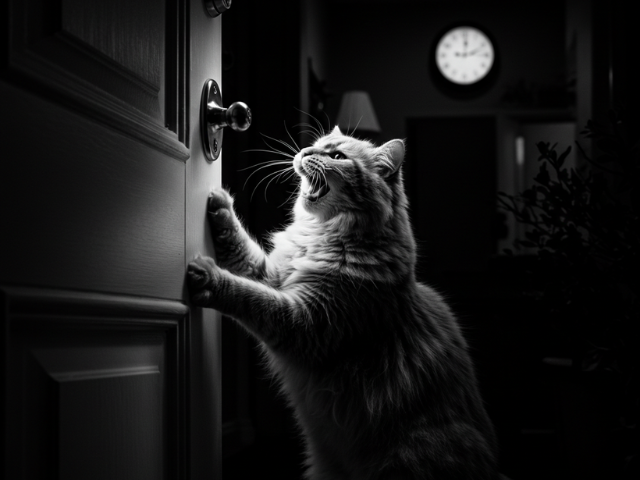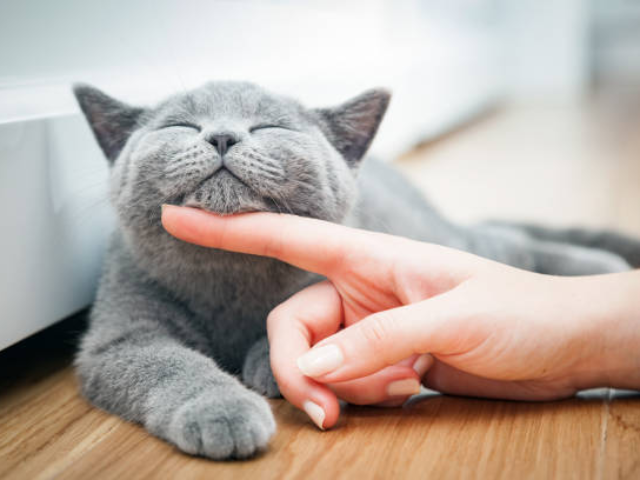Is your sweet little male kitten starting to pace, make strange noises, or leave smelly marks around the house? Don’t worry; he’s not sick. It only means your young tomcat is becoming sexually mature.
While many associate “heat” with female cats, male cats undergo significant changes as they grow up. Understanding what age male cats go in heat is crucial for responsible pet ownership to help you prepare for these changes and make informed decisions about your pet’s care.

First, let’s clear up common confusion. Female cats have distinct cycles when they are receptive to mating (estrus or “heat”). Male cats don’t work that way. Once a male cat reaches sexual maturity, he doesn’t cycle in and out. Instead, he becomes capable of mating when an opportunity arises, especially if a female in heat is nearby. It’s less like a cycle and more like becoming constantly “ready.”
What causes this change? Hormones, mainly testosterone. As your male cat matures, his body produces much more testosterone. This hormone triggers sperm production in his testes and the development of behaviors linked to mating. He isn’t being difficult; he’s only responding to strong biological urges.
Realizing he’s potentially fertile from this point on is vital for preventing unwanted litter. Understanding the age at which male cats go into heat is essential for proper preparation.

Most male cats reach sexual maturity around 5 to 12 months old. It’s when they can reproduce. However, the exact time varies. Some mature earlier, around 4 or 5 months, while others take longer, closer to a year. Watch your young male cat during this time for behavioral changes indicating maturity.

Several factors influence when male cats reach sexual maturity. Let’s explore some key influences.
Some breeds mature earlier or later. Purebred cats like Siamese and Burmese often hit puberty sooner, while mixed breeds may follow a more varied schedule. Knowing your cat’s breed can help determine when those behaviors might start.
Good food fuels good growth. A balanced diet with essential vitamins and minerals supports overall health and boosts sexual maturity. Poor-quality food or underfeeding might delay puberty. Properly feeding your tomcat is vital for his development and helps prevent surprises when he suddenly behaves like a tiny Casanova.
The general health and weight of your cat play significant roles. Kittens with chronic health issues or are underweight may mature later than their healthy, well-nourished counterparts. Regular vet check-ups and monitoring your cat’s weight help you spot any problem early and understand his growth pattern.
While the environment doesn’t affect male cats as much as females, it still plays a role. A calm, stable home helps your cat mature on time. Stress from overcrowded or noisy spaces can delay his development. So, ensure your cat’s surroundings are peaceful to keep his behavior predictable as he matures.

Once your male cat reaches sexual maturity, typically between 5 and 12 months, you’ll notice distinct behavioral changes. These changes signal that your young cat can reproduce and respond to hormonal influences.
One of the most evident signs of sexual maturity in male cats is urine spraying. Unlike normal urination, where cats squat, spraying involves standing upright and directing urine onto vertical surfaces like walls or furniture.
When a cat sprays, he usually backs up to a surface, raises and shakes his tail, and releases small amounts of urine. This urine has a strong, musky smell because of specific hormones and pheromones.
This behavior serves as communication—your cat is marking territory and announcing his presence to potential mates. Unfortunately, it’s also one of the most common reasons cat owners seek help, as the smell can be overwhelming and hard to remove.
Sexually mature male cats become notably more vocal, especially if they detect a female in heat nearby. You might notice your previously quiet kitten suddenly developing a loud, distinctive yowl that sounds quite different from normal meowing.
These vocalizations serve to attract females and warn off competing males. The sound can be startling, as it often happens in the evening when females are most active and receptive.
Your cat may display increased restlessness and agitation once he reaches sexual maturity. You might notice him pacing around the house, seeming unable to settle. This behavior often intensifies if he detects a female in heat nearby.
Some male cats also show increased aggression toward other male felines as they compete for territory and mating opportunities. It can lead to fights, which may cause injuries if your cat roams outdoors freely.
Many cat owners report that their sexually mature males seem more demanding of attention, sometimes becoming pushier or more insistent when they want interaction.
A sexually mature male cat shows immediate and intense interest in female cats in heat. If you have female cats in your neighborhood, your male cat might spend hours stationed at windows or doors, seeming transfixed by distant sounds or scents imperceptible to humans.
This interest in females can lead to frustrated behaviors if your cat cannot reach potential mates. Some males may display increased agitation or destructive behaviors due to this frustration.
Even indoor males without direct contact with females may react to pheromones that can travel considerable distances on air currents.
Perhaps one of the most dangerous behaviors of sexually mature male cats is their strong urge to roam and search for mates. Males may attempt to escape from the house or yard, sometimes going the extra mile to get outside.
Once out, unneutered males may travel surprising distances—sometimes several miles—following the scent of females in heat. This roaming puts them at risk of traffic accidents, fights with other animals, exposure to diseases, and becoming lost.
Many cat owners report that their once-homebody cats suddenly disappear for days after reaching sexual maturity, only to return hungry, injured, or sometimes not at all.

Understanding maturity signs leads to considering neutering. Neutering (castration) refers to the surgical removal of a male cat’s testes. This procedure effectively reduces the hormone levels, eliminating or reducing behaviors like spraying, yowling, restlessness, and the drive to roam. It essentially stops male cats from experiencing these mating-driven urges. The benefits include:
Vets usually recommend neutering male cats around 4 to 6 months of age. Doing it before signs of maturity occur is ideal for preventing unwanted behaviors. However, neutering older cats is also safe and beneficial. Talk to your veterinarian about the best timing for your cat, especially if you want to know the answer to the question, “At what age do male cats go into heat?”

Here are answers to some frequently asked questions about male cats and heat:
No. Neutering eliminates the testicles, which are the main producers of testosterone. Without this hormone, the drive for sexual maturity is gone. A neutered male cat won’t spray, vocalize excessively, or show intense interest in females in heat.
No, neutering is responsible and humane. It offers many health and behavioral benefits, prevents unwanted litter, and reduces the risk of diseases and injuries. While surgery might seem daunting, it’s a simple procedure with a quick recovery. The long-term benefits for your cat’s well-being are significant.
Neutering eliminates behaviors related to mating and territory marking but doesn’t change your cat’s fundamental personality. Many owners find their neutered cats more relaxed and affectionate without the stress of reproductive drives.

Male cats usually mature between 5 and 12 months. By then, you will likely notice signs such as urine spraying, increased vocalization, restlessness, and a keen interest in nearby females. Knowing the answer to the question, “What age do male cats go in heat?” will help you handle these behaviors effectively.
Neutering is one of the recommended steps by vets. Not only does it curb these unwanted habits, but it also brings multiple health benefits, keeping your cat safe and your home peaceful.
Watch out for your cat’s signals and take proactive steps for his care. With careful observation and timely action, you’ll ensure that your feline companion leads a happy, healthy life—proving that being prepared is the secret ingredient to being a great pet owner.

